Hidden away in the Bavarian Alps, Linderhof Palace is so much more than a gorgeous building—it’s King Ludwig II’s most personal masterpiece. When I wandered through its grand halls, took in the manicured gardens, and stepped inside the mysterious grotto, I really felt the golden splendor and secret magic of Bavaria’s only royal palace finished while Ludwig was alive.
Everywhere I looked, something new caught my eye—dazzling Rococo rooms, peaceful fountains, and playful statues hiding in the greenery.
Sure, Linderhof isn’t as massive as Versailles, but its detail and charm honestly blew me away. Walking the grounds, I started to get why Ludwig wanted his own fantasy world, far from ordinary life.
If you’re searching for hidden gems in Bayern, you’ve got to put this place near the top of your list.
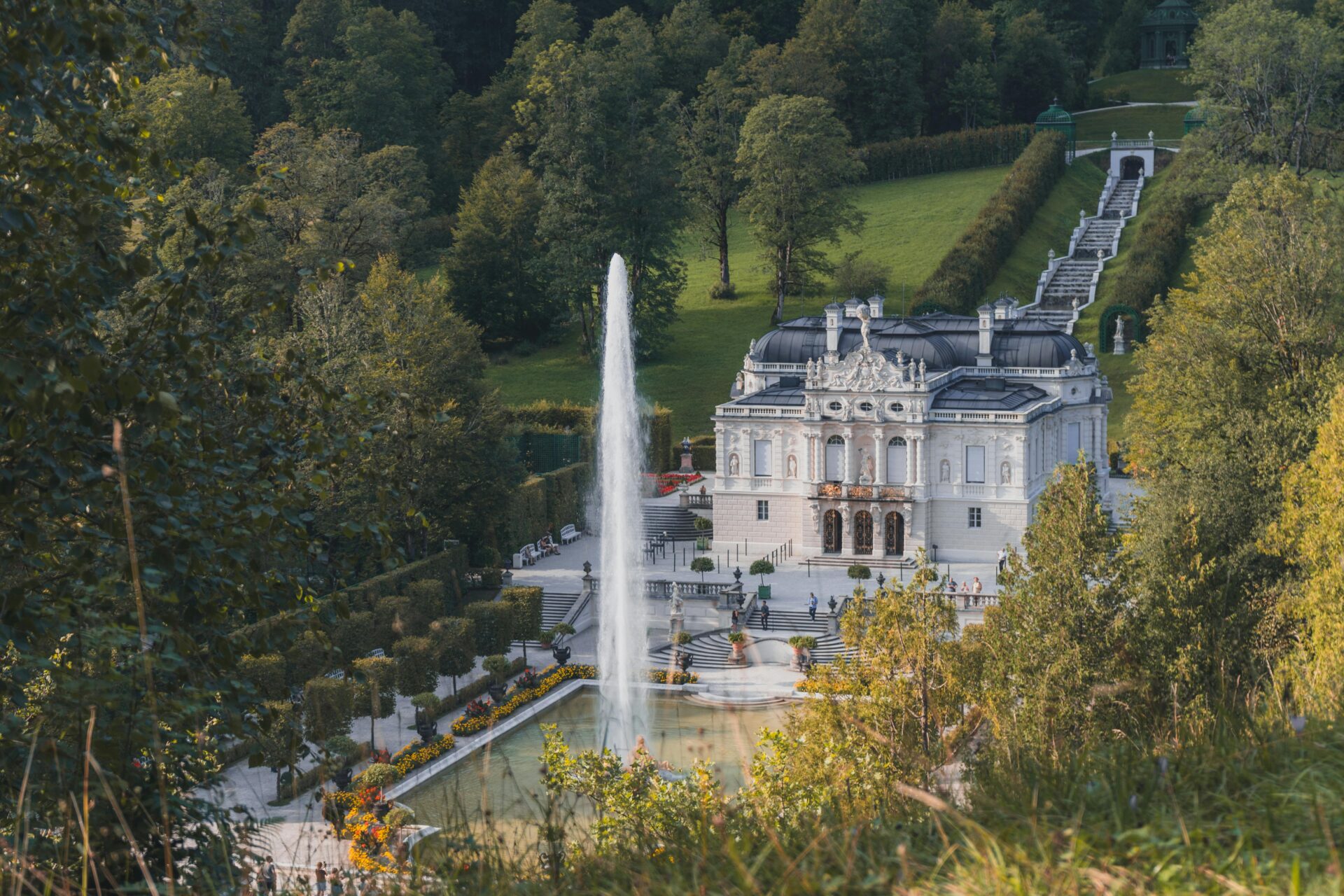
The Visionary King: Ludwig II’s Dream and Inspiration
When I stood before Linderhof Palace, it struck me how every detail reveals something about King Ludwig II. He was shaped by outside influences, creative partnerships, and the quiet drama of palace intrigue.
Let’s dig into what fueled his imagination—France’s glory days, Wagner’s music, and the tangled world of the Bavarian court.
The Influence of France on Bavarian Grandeur
Ludwig II couldn’t get enough of France, especially Louis XIV’s reign. He saw Versailles as the ultimate in royal luxury, so he borrowed its style when building Linderhof.
Every time I stepped through rooms covered in gold leaf and ornate mirrors, the French influence just shimmered everywhere.
He based Linderhof on smaller French palaces like the Palace of Marly. Ludwig used the Neo-Rococo style—rich, detailed, and elegant—to show off his love for French art.
He recreated key features: symmetrical gardens, reflecting pools, and dramatic fountains.
For Ludwig, France’s Baroque world meant absolute power, beauty, and the highest form of art. He made it his mission to bring that vibe to Bavaria.
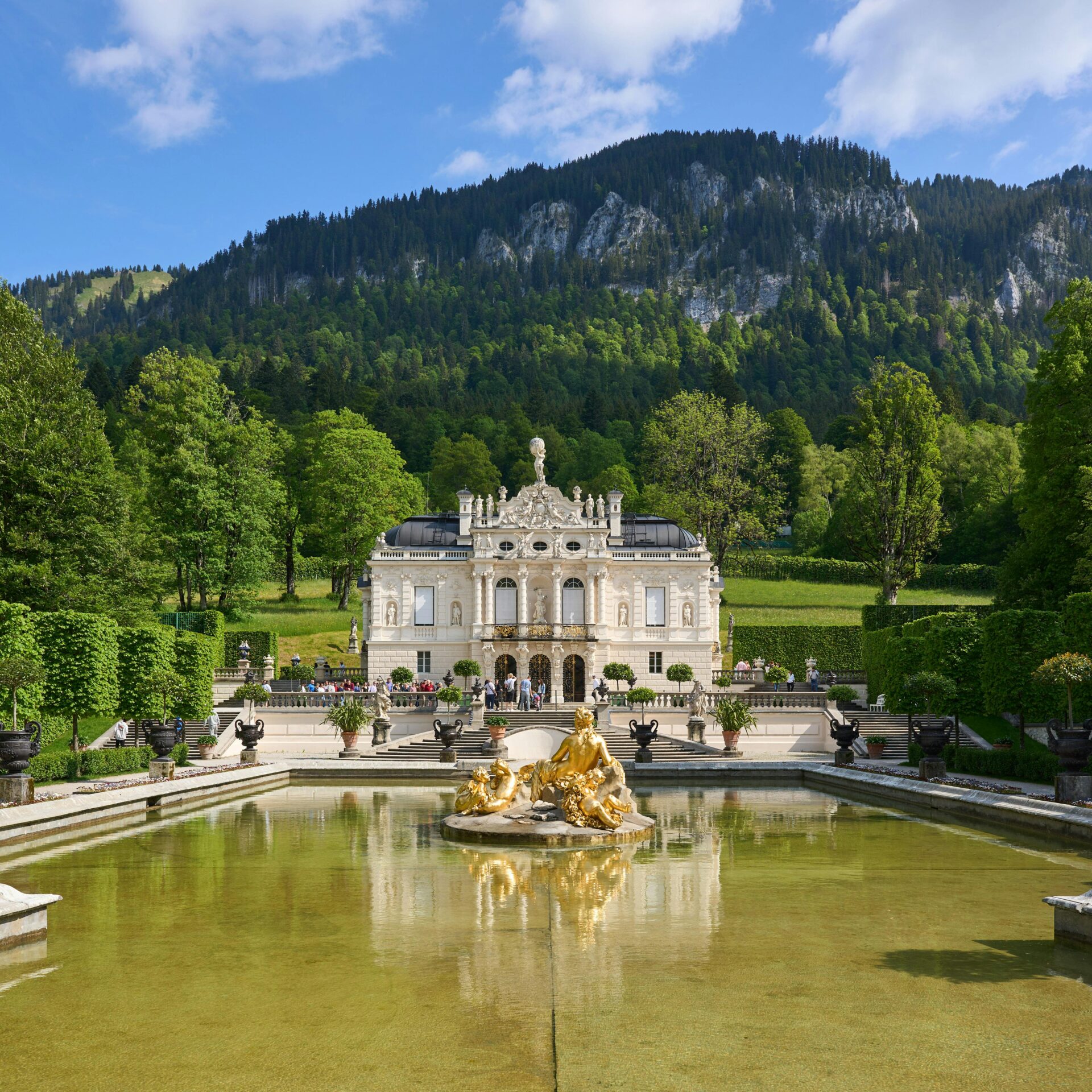
Richard Wagner’s Impact and Royal Patronage
From the moment Ludwig II met Richard Wagner, he fell under the composer’s spell. He thought Wagner was a genius and backed him completely.
Ludwig put huge sums into Wagner’s projects, even bailing him out of debt so Wagner could keep creating.
As I walked through Linderhof’s Venus Grotto or the Moroccan Pavilion, I saw Wagner’s love of drama woven into the palace grounds. Ludwig designed these spaces to echo scenes from Wagner’s operas.
It really felt like stepping into a magical set.
Wagner’s touch is everywhere—art and architecture blending together. Ludwig wanted guests to feel like they’d entered a living opera, with Bavaria itself as the stage.
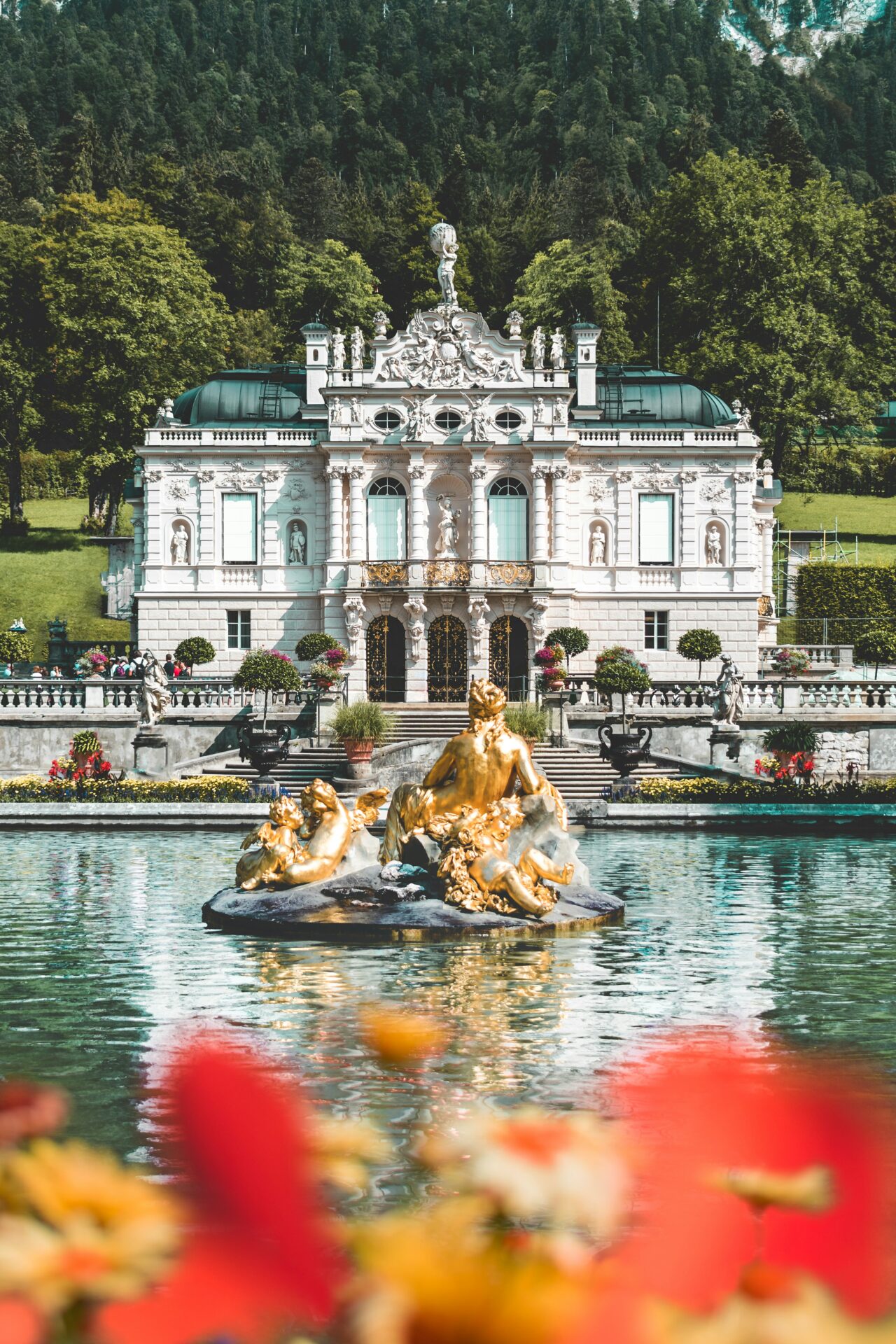
Collaborations and Court Intrigues
Ludwig didn’t build Linderhof alone. He worked closely with talented architects and designers, especially Georg Dollmann.
Together, they pulled off wild ideas like the artificial grotto and the extravagant garden sculptures.
But the Bavarian court didn’t always approve. As costs soared and Ludwig’s plans got bigger, rumors and whispers started swirling.
Some ministers doubted him, calling his projects extravagant. Walking the palace halls, I could almost feel that old tension—secret meetings, quiet plotting.
Even with all the drama and obstacles, Ludwig’s vision kept moving forward. The result? A private retreat where every room, statue, and fountain hints at teamwork, opposition, and one man’s stubborn ambition.
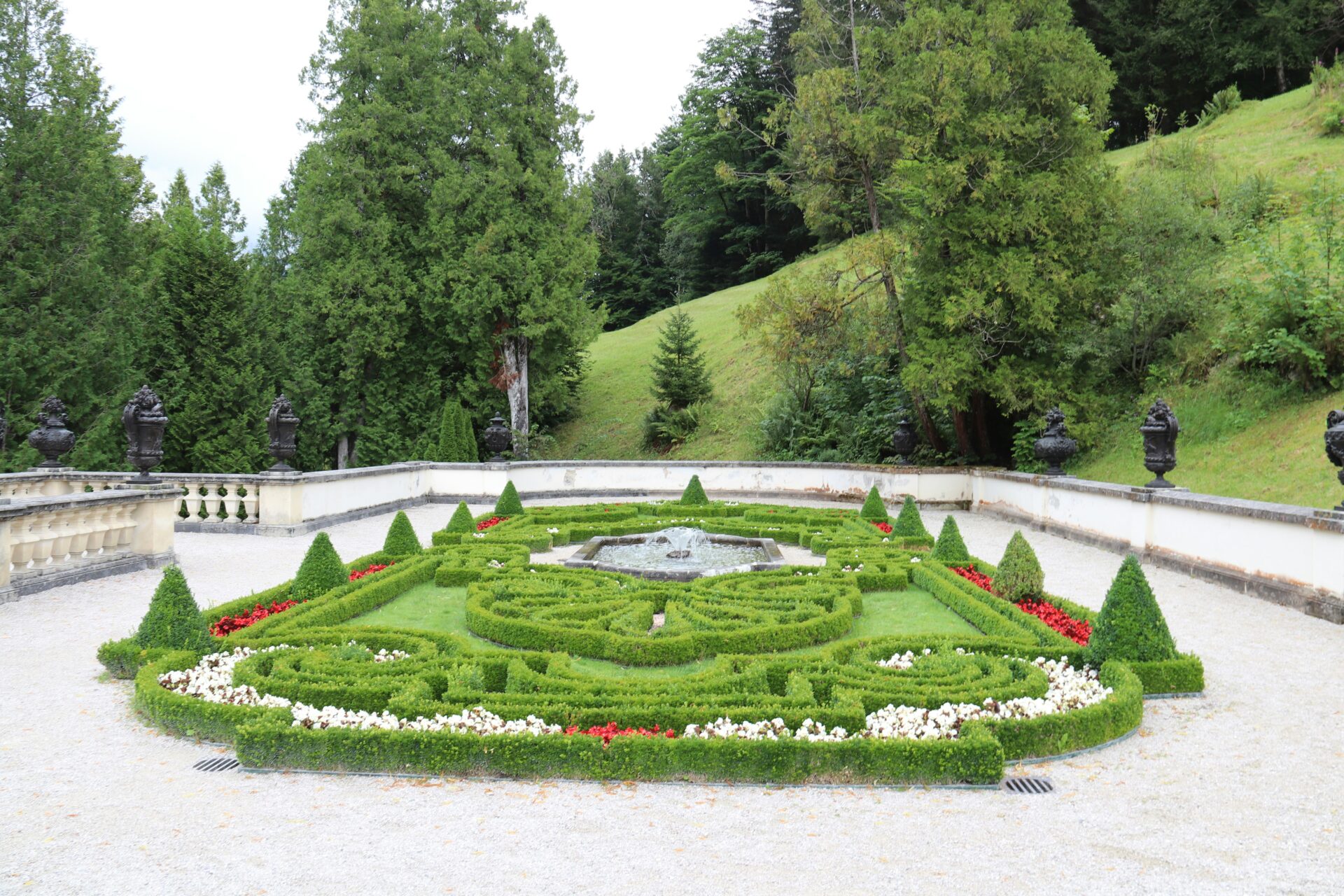
A Walk Through the Palace: Rococo Interiors and Golden Splendor
Stepping into Linderhof Palace, I felt like I’d landed right inside King Ludwig II’s daydreams. Every room burst with rococo style, gold, and intricate details.
Each corner seemed to show off royal dreams and Bavarian pride.
Highlights of the Private Chambers
When I entered Ludwig’s private rooms, their intimacy hit me. The King liked his privacy, so his chambers stayed smaller than most royal suites.
Still, every space—from the bedroom to the study—overflowed with ornate wall carvings, silk drapes, and delicate marble statues.
The royal bedchamber was my favorite. Blue and gold lined the walls, with heavy velvet curtains, crystal chandeliers, and hand-painted ceilings.
It felt both cozy and theatrical, like Ludwig had built his own world to escape politics and stress.
Nearby, the dressing room and tiny dining area showed more of Ludwig’s quirky habits. That famous “table à confidence” lowered through the floor so he could eat alone, out of sight. It’s a small detail, but it really brought his private side to life for me.
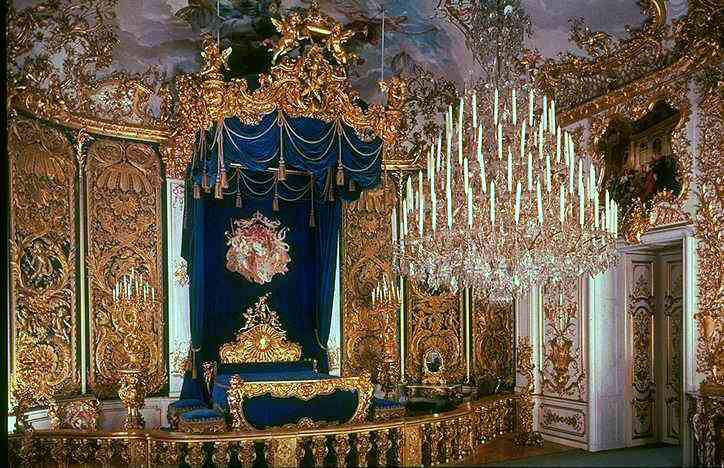
The King’s Opulent Hall of Mirrors
The Hall of Mirrors stopped me in my tracks. Standing in the middle, I was surrounded by mirrors reflecting candles and gold in every direction.
The room seemed to stretch forever—a glowing tunnel of Rococo swirls.
Rows of candelabras and carvings revealed Ludwig’s obsession with Versailles and French luxury, but on a more human scale.
I paused to look up at the ceiling, painted with legends and myths that mixed Bavarian history and Ludwig’s fantasies.
I can only imagine how magical the Hall looked at night. I pictured the king wandering by candlelight, leaving behind all the political mess.
For visitors, the Hall of Mirrors offers a peek into Ludwig’s world of dreams, beauty, and endless reflection.
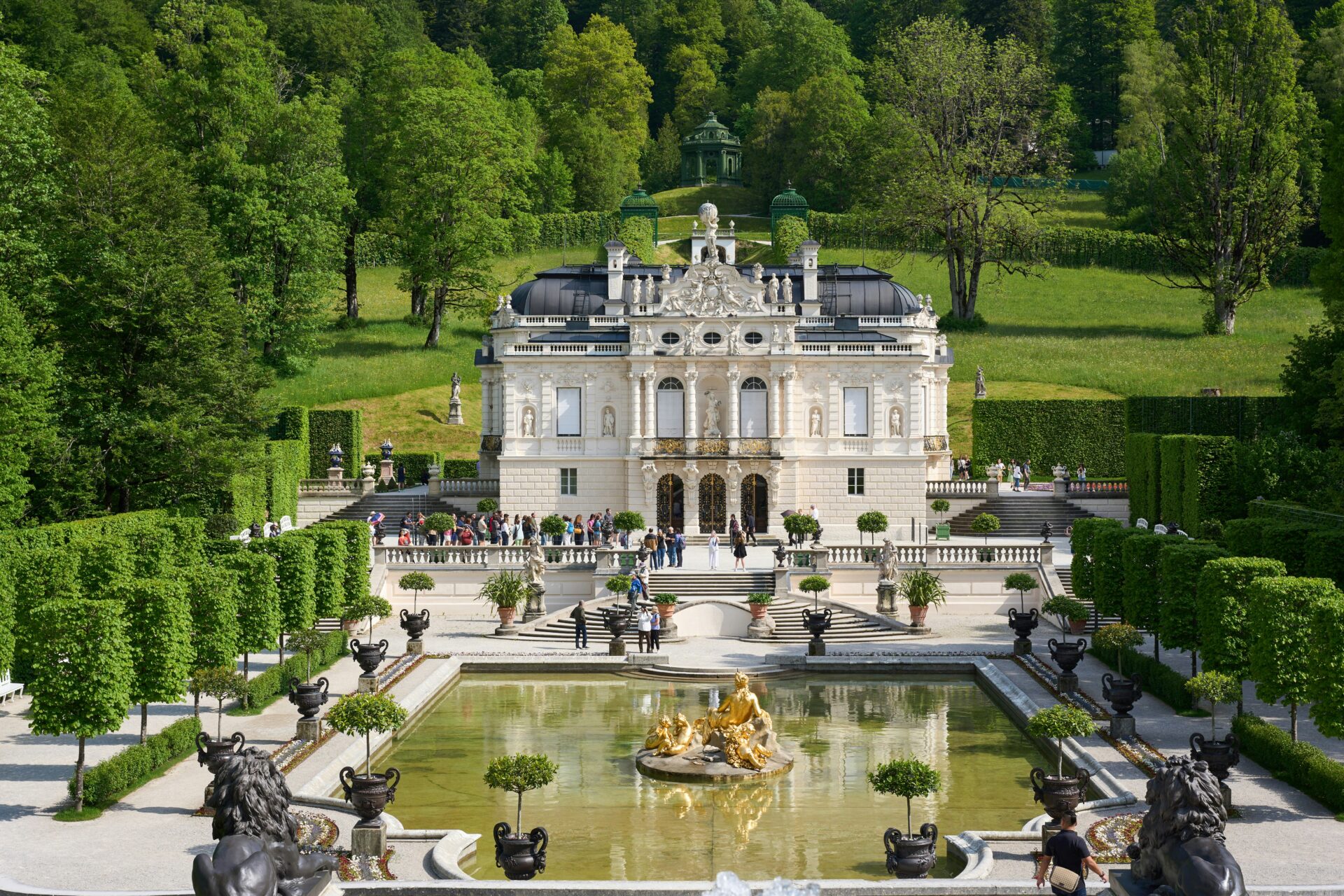
Unique Furnishings and Symbolic Decor
Linderhof’s furniture felt loaded with meaning. Gold-trimmed chairs, porcelain vases, and mother-of-pearl tables filled the rooms.
Most pieces showed off Rococo curves and nature themes—carved flowers, leaves, and animals everywhere.
The decor brimmed with symbolism: swans for purity, lions for strength, and sun motifs as a nod to Ludwig’s idol, Louis XIV, the “Sun King.”
Even the tiniest lamp or clock hinted at stories of power and fantasy, blending legend and Ludwig’s wish for a kingdom set apart.
I loved the playful secret doors, hidden writing desks, and clever gadgets tucked around the rooms. Each detail celebrated Bavarian craftsmanship and invited me to imagine life as a king and a dreamer in this golden hideaway.
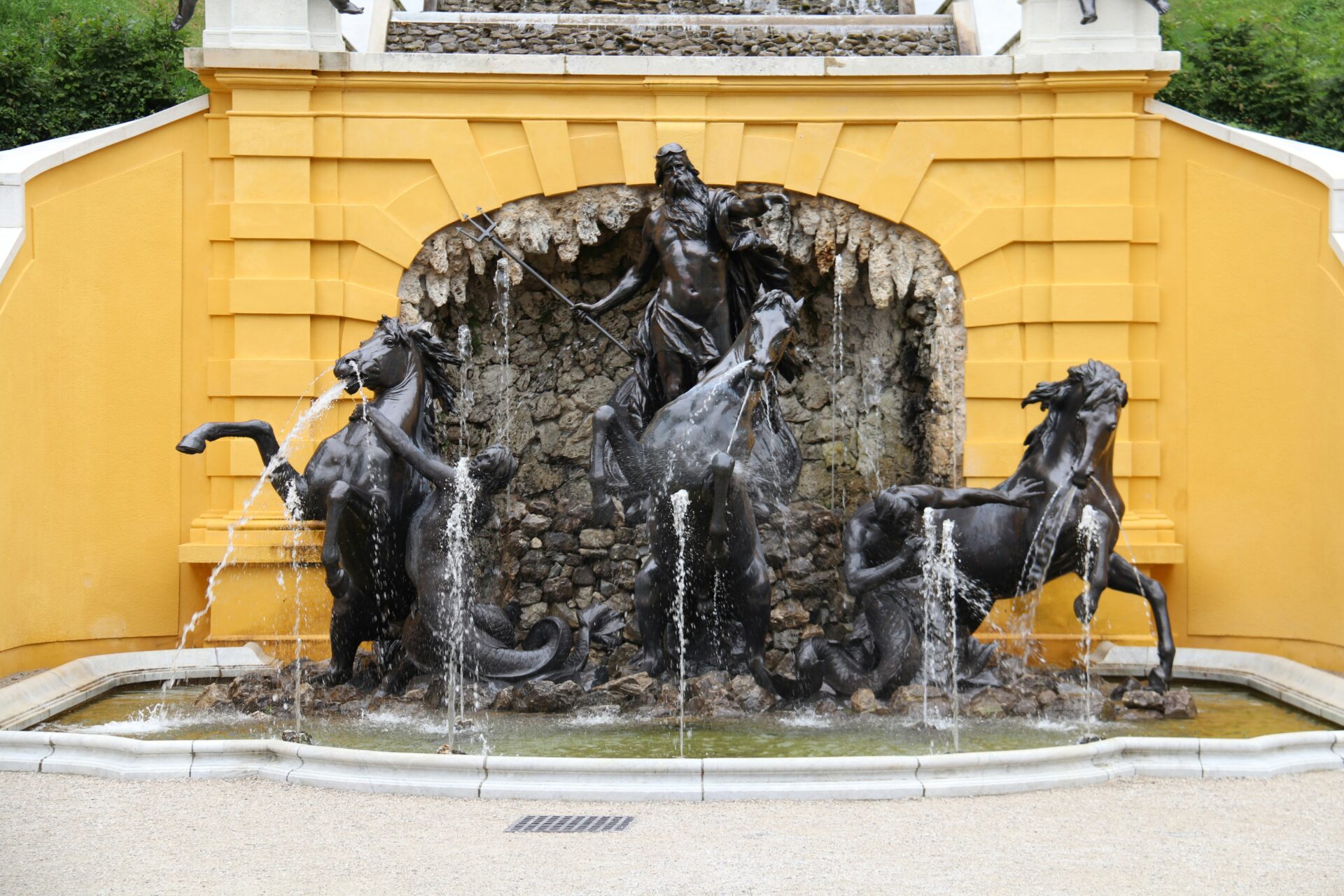
Magical Grottoes: Exploring the Venus Grotto and Hidden Wonders
As I wandered Linderhof’s gardens, I felt drawn deeper into King Ludwig II’s strange, magical world. Nowhere is his mix of art, science, and mystery clearer than in the palace’s artificial caves—especially the Venus Grotto.
Venus Grotto: The Romantic Heart of Linderhof
They built the Venus Grotto for Ludwig between 1875 and 1878. It isn’t a natural cave, but it sure feels like a secret world, with winding paths, sparkling stalactites, and a tiny lake.
Hidden under the palace, the grotto stretches almost 90 meters and rises up to 14 meters high.
Wagner’s music filled Ludwig’s mind, and this hidden chamber became his private stage. The grotto takes inspiration straight from Wagner’s opera “Tannhäuser,” where Venus draws the hero into her glowing cave.
Sometimes, I stood inside and pictured Ludwig drifting by in his swan boat, as colored lights made the water twinkle.
Must-See Details:
- Underground lake—always heated to a cozy 28°C for the king’s boat rides
- Changing colored lights—an early “mood lighting” trick for dramatic effect
- Stage and mural—where Wagner’s opera scenes come alive
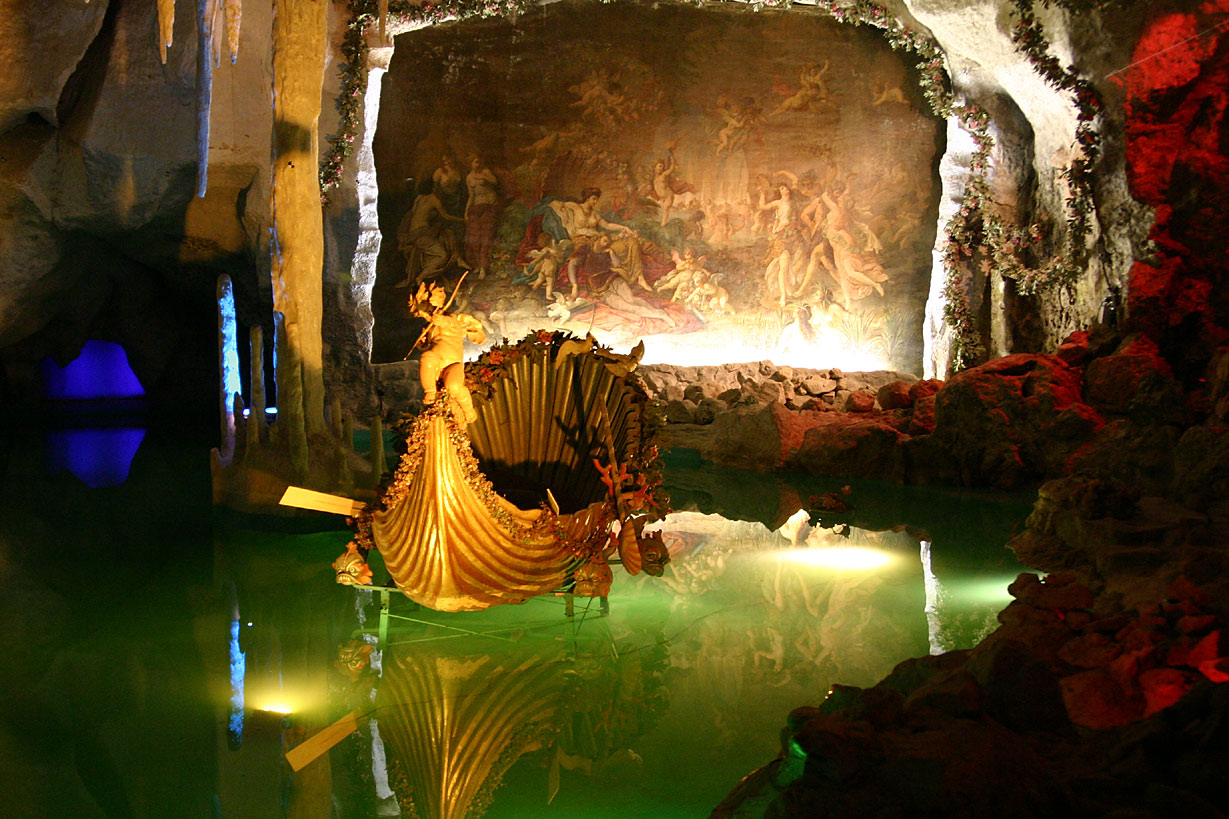
Technological Marvels of the Artificial Caves
The Venus Grotto’s design used the best tech of its day. Ludwig wanted the experience to feel real, so builders installed a system to keep the lake warm and filled the air with special effects.
It’s kind of like the “cinema of its day.”
A power plant supplied electricity for the shifting lights. They shaped fake cliffs from concrete and paint—so convincing, even experts get fooled.
Engineers hid pipes and vents in the rocks, creating fog or gentle rain for Ludwig’s amusement.
Quick Facts Table
| Feature | Description |
|---|---|
| Lighting System | Early electric, colored filters |
| Lake Heating | Warmed water (approx. 28°C) |
| Sound Effects | Wagner’s operas played live |
Honestly, I couldn’t always tell where the engineering ended and the magic began.
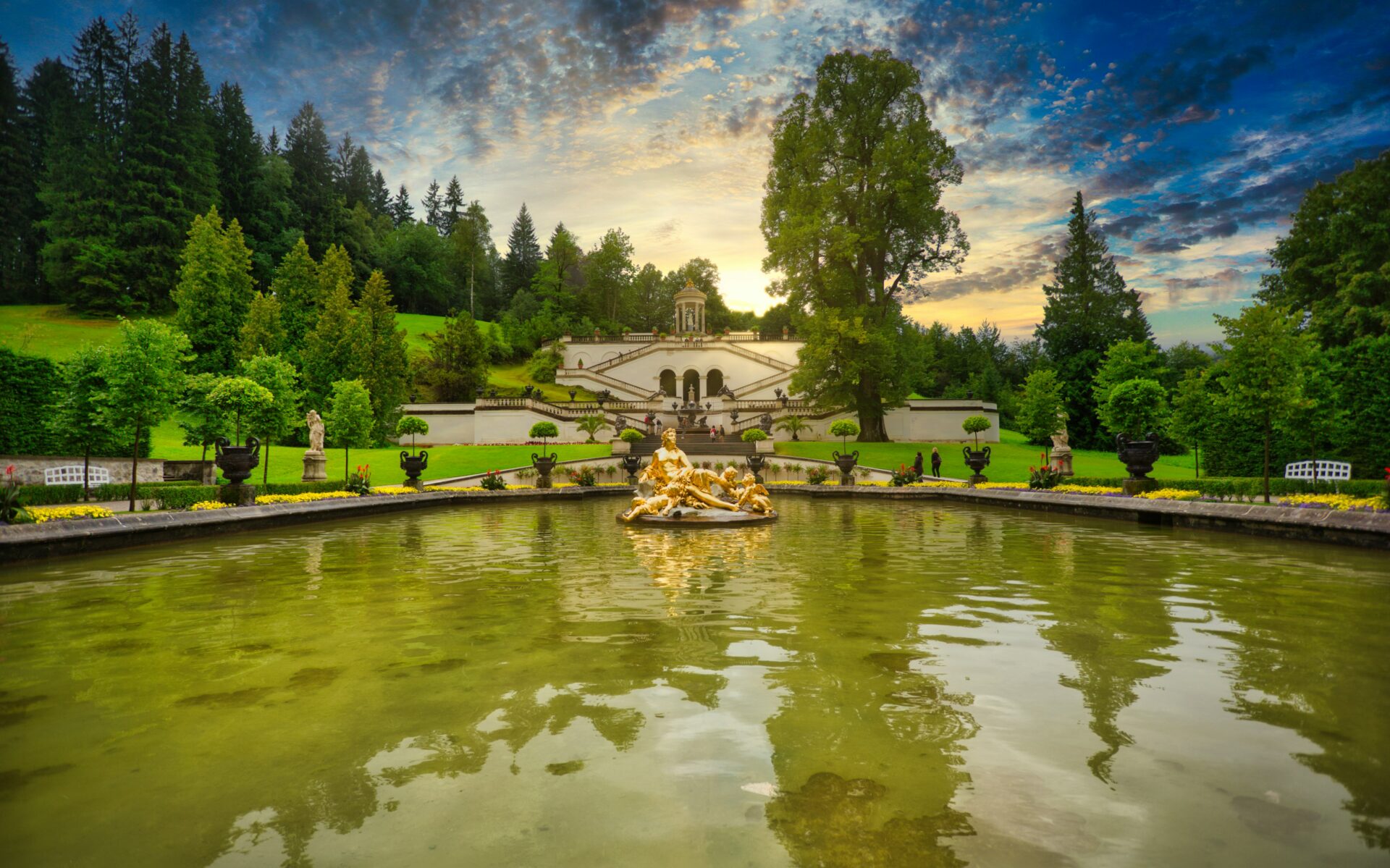
Art, Legend, and Espionage Connections
The grotto wasn’t just a getaway. It’s a living tribute to Wagner—myth, music, and visual spectacle all blended together.
Murals tell stories of love and longing, while statues and hidden alcoves invite quiet moments under painted stars.
Locals love to tell rumors about the palace’s secret uses. Some guides even mention “espionage tunnels” or spies hiding inside, which adds a fun layer of mystery—even if there’s no proof.
Film buffs might spot the cave’s theatrical design in documentaries and movies about fantasy palaces.
Standing there, breathing in the cool air and watching the painted stone glow, I felt all the layers—art, invention, and a dash of secret history.
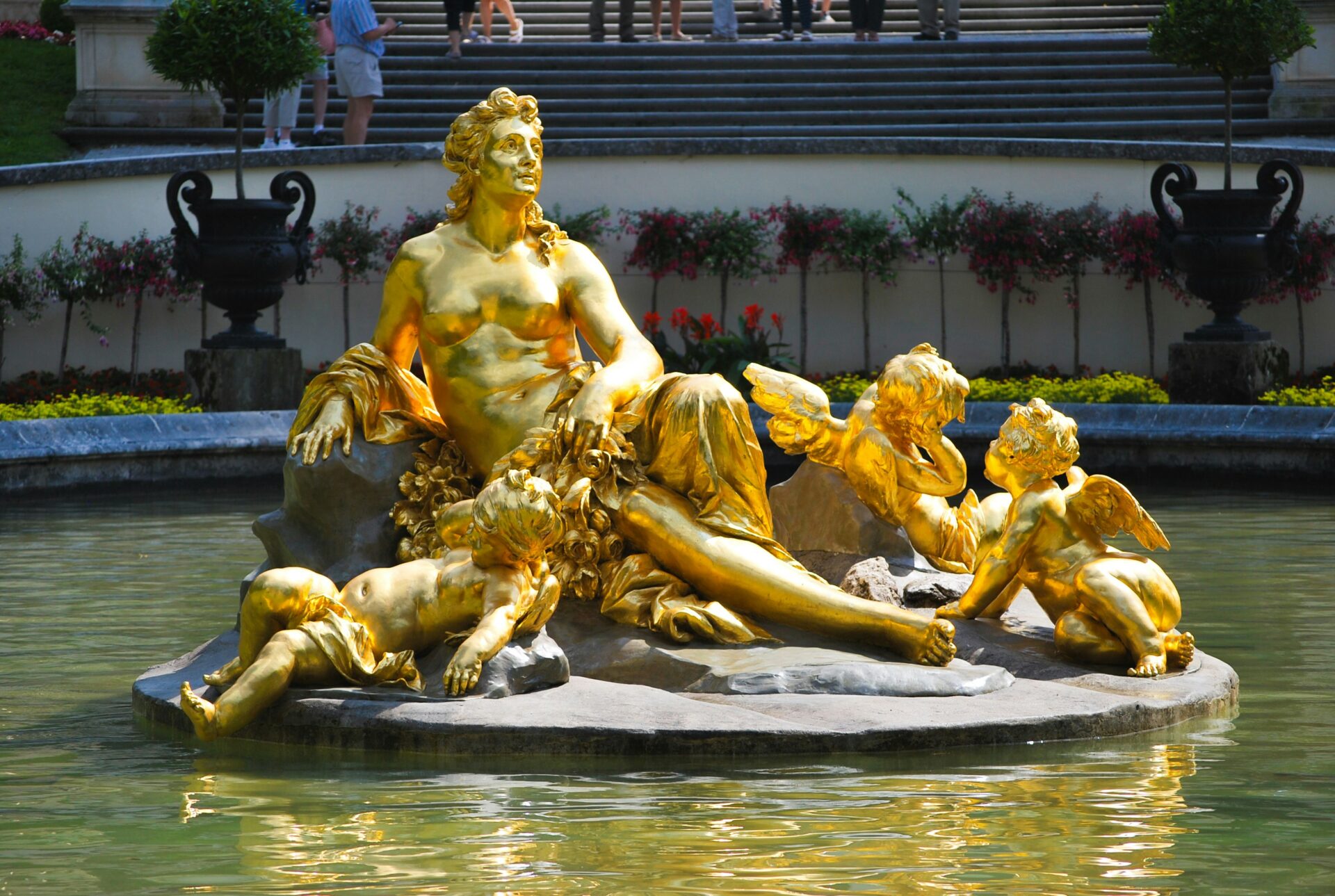
Gardens of Fantasy: Landscapes, Fountains, and Exotic Pavilions
Exploring Linderhof’s outdoor spaces, I felt like I was wandering through different worlds. Each section seemed crafted with a mix of purpose and wild imagination.
Every garden, fountain, and pavilion told its own story.
Formal Gardens and Fountains
The main garden axis feels straight out of French history. Walking past geometric flower beds and neat terraces, I couldn’t help but think of Versailles—Ludwig’s big inspiration.
The layout is all about structure—straight lines, symmetry, and tight parterres.
A large water basin sits right across from the palace’s ornate front. The dramatic fountain jet, called the Springer, shoots water up to 25 meters.
I stopped to watch the spray glint in the sunlight, ringed by marble statues and mythic figures. The fountains use natural water pressure—a clever bit of 19th-century engineering.
Tables of key features:
| Feature | Description |
|---|---|
| Water Basins | Central reflects palace, border with statues |
| The Springer Fountain | Shoots water 25 meters high, powered by gravity |
| Formal Flower Beds | Use geometric designs and low hedges |
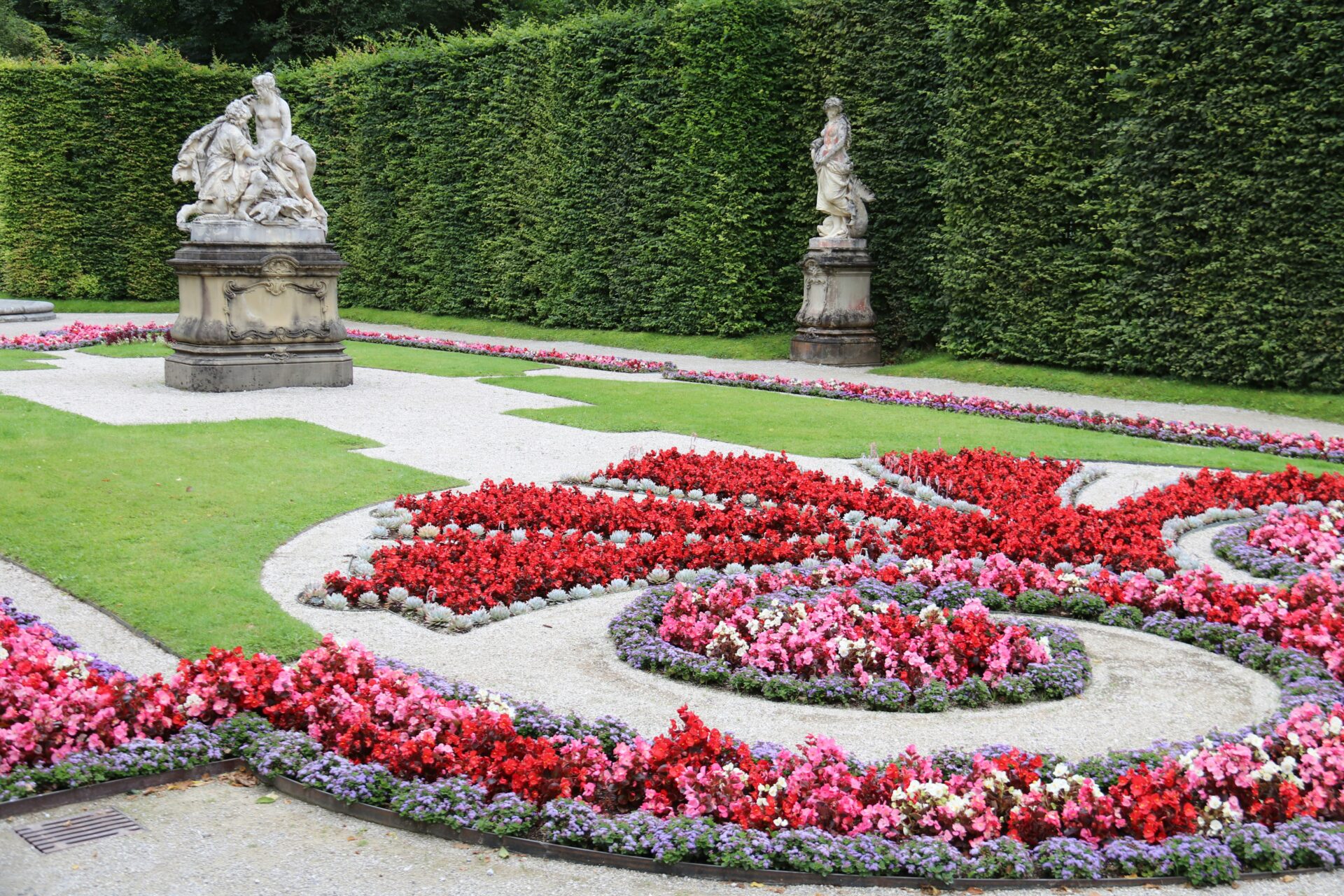
Moorish Kiosk and Eastern Influences
Deep in the park, hidden among English-style paths, I stumbled on the Moorish Kiosk—a dazzling pavilion Ludwig bought after seeing it at a world exhibition.
Outside, you get gilt domes and fancy filigree. But the real surprise waits inside.
Inside, the place bursts with Eastern design—colorful mosaics, stained glass, and low divans inspired by Ottoman and Moorish styles.
The highlight is definitely the “Peacock Throne,” sparkling with glass beads. For a moment, I felt whisked away to a fantasy Middle East.
The kiosk reflects Ludwig’s fascination with Orientalism and his urge to collect exotic art from far-off lands—China, Greece, you name it. It’s a very 19th-century European thing.
Heads up: The pavilion only opens at certain times—check ahead if you want to go inside.
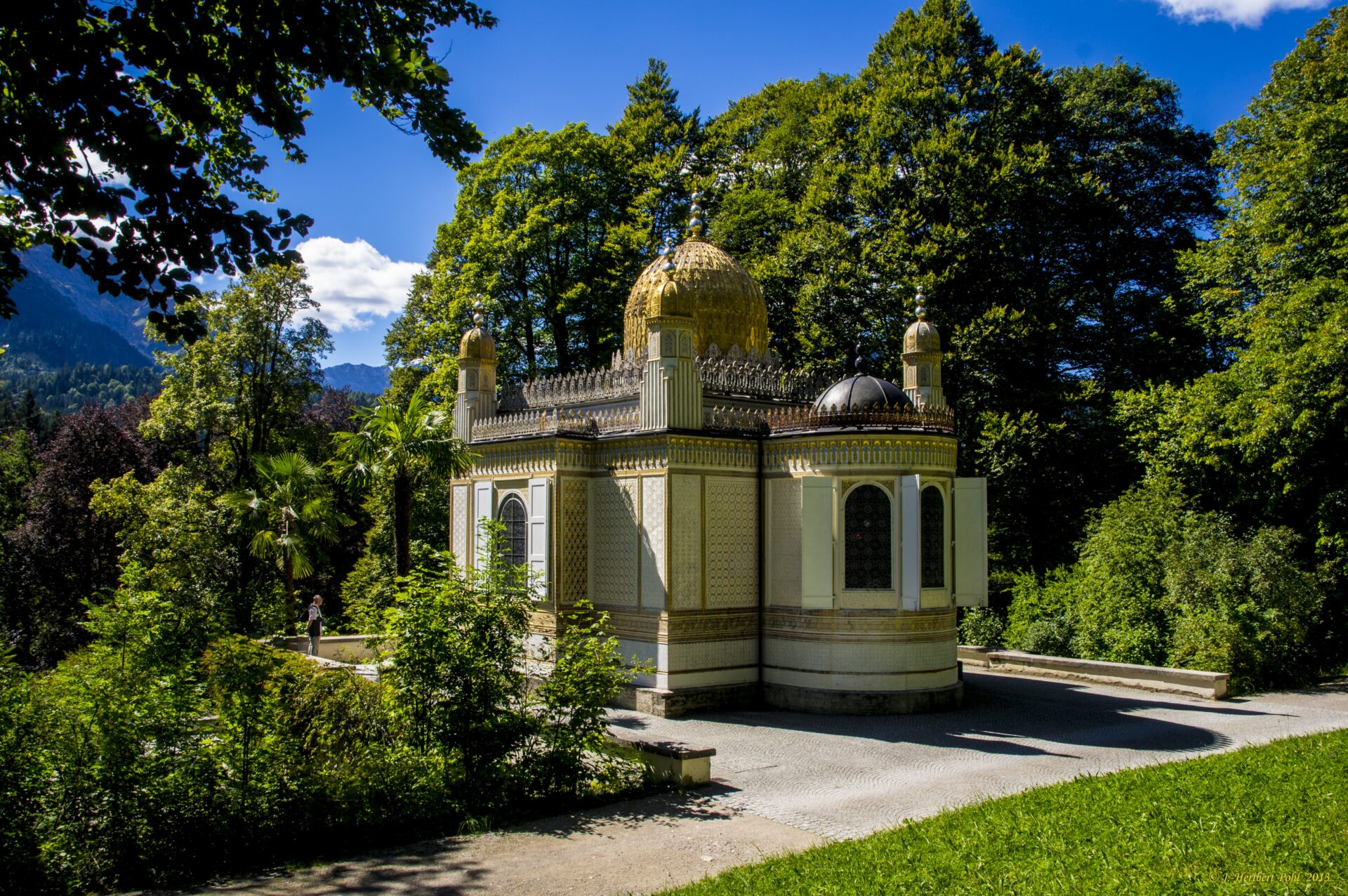
Springer and Mythical References in Garden Design
Linderhof’s gardens burst with Greek and Roman mythology. Statues and fountains pop up everywhere you look.
The Springer stands out—not just for its clever engineering, but as a visual anchor. Statues of gods and nymphs cluster around it, each one fitting into Ludwig’s wild, storybook vision.
Ludwig didn’t just copy ancient Greece; he mixed those classical touches with Bavarian flair. I noticed marble Perseus statues, nymph fountains, and paths that almost whispered legends as I walked.
Even the smallest pavilions surprised me. Some carried hints of Prussia or China, turning the gardens into a curious, living museum. Whether you love art, history, or just want a peaceful stroll, there’s something to catch your eye.
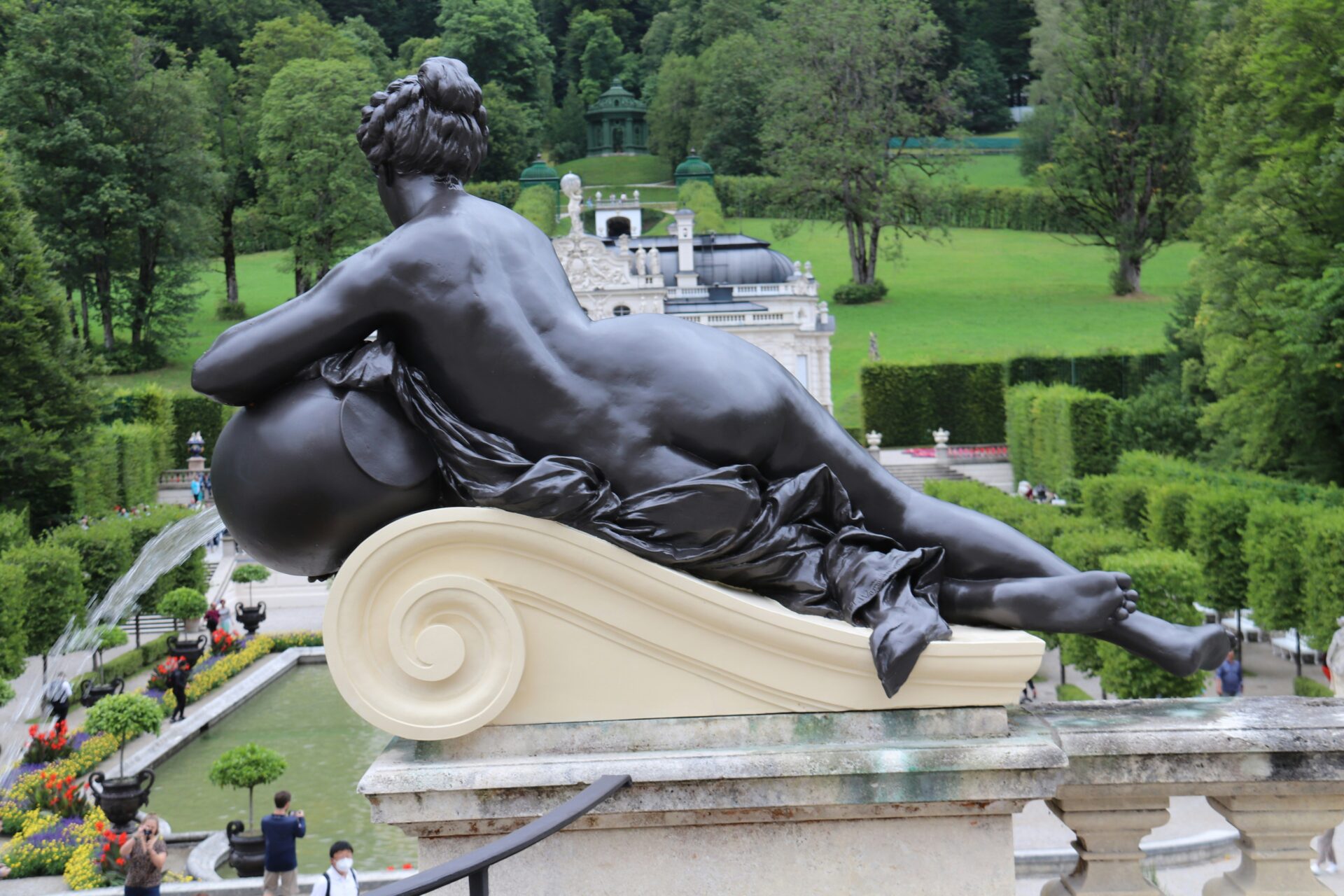
Golden Splendor and Global Context: Linderhof in the World
Linderhof Palace isn’t just about Bavarian splendor. Its golden halls and lush gardens connect to a bigger story—one that stretches across politics, design, and even the world of film.
Sometimes, the palace feels like a crossroads where surprising influences meet.
Influence of France and Great Britain
Walking into Linderhof, I felt like I’d wandered into Versailles by accident. King Ludwig II borrowed a lot from the Sun King, Louis XIV, and you can see it everywhere.
The Rococo details—mirrors, gold leaf, velvet—practically shout French taste from the 1700s. The gardens and fountains echo Versailles, and Ludwig’s admiration for French grandeur stands out.
But it’s not just France. I spotted British touches too. The winding paths and structured lawns remind me of English gardens. Some visitors even compare the grounds to English stately homes.
If you know what to look for, Ludwig’s fascination with these countries jumps out at you.
Key Highlights:
- French Rococo interiors: gold, mirrors, velvet
- Versailles-inspired gardens
- English park design: walking paths, lawns, natural views
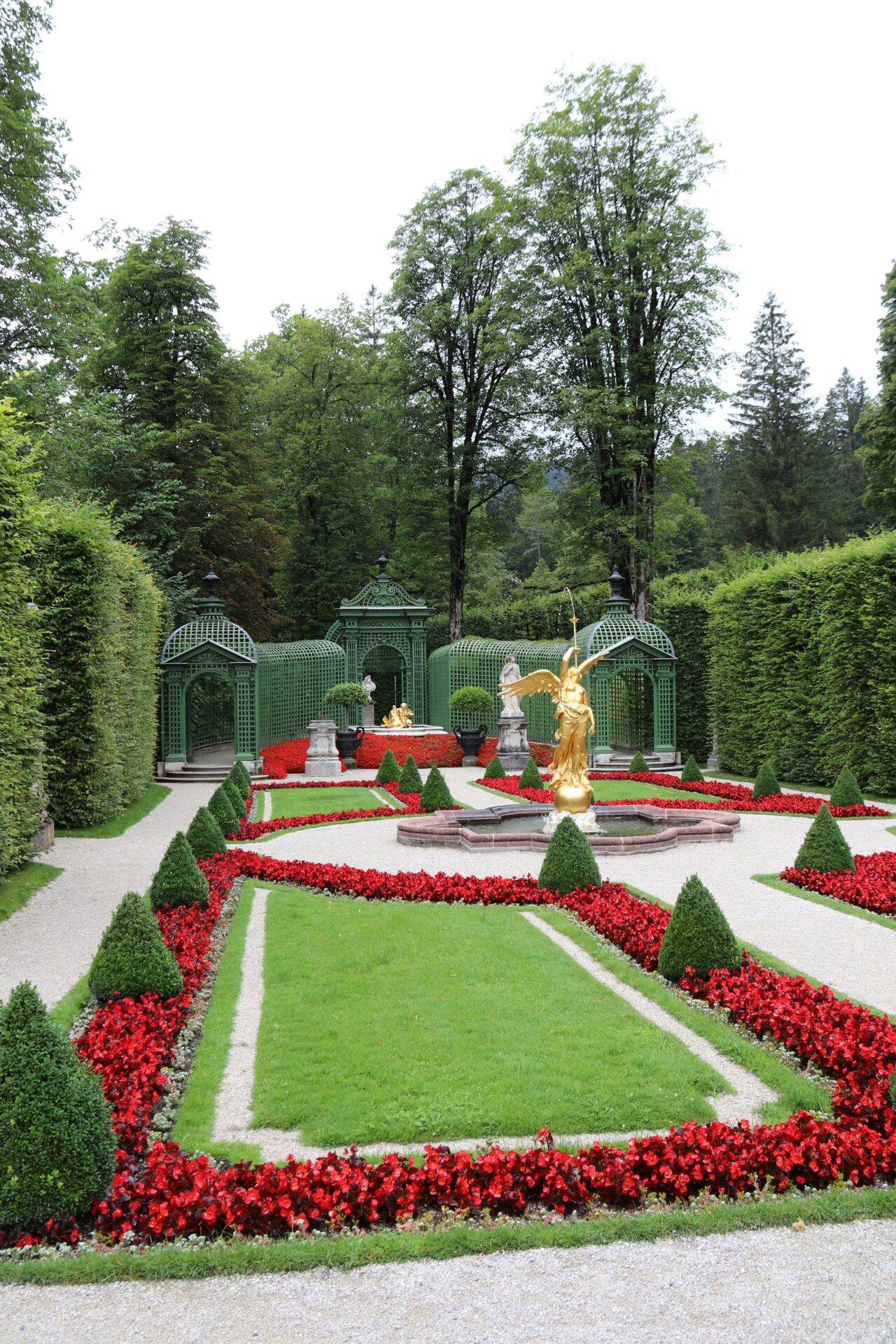
Diplomacy, Military Intelligence, and International Visitors
Linderhof served more than just looks. It quietly hosted international diplomacy.
Officials from France and Great Britain came here, sometimes for sensitive diplomatic discussions. Ludwig II never played the politician, but his palace set the perfect mood for subtle negotiations.
Guides share stories about secret meetings and carefully staged events to impress European allies. Military intelligence officers sometimes visited too, observing Bavaria’s security behind the scenes.
Linderhof’s privacy and luxury made it an ideal spot for private talks in the late 1800s.
Visitor Origins Table:
| Country | Reasons for Visit |
|---|---|
| France | Diplomacy, culture, design |
| Great Britain | Gardens, alliances |
| United States | Tourism, culture, curiosity |
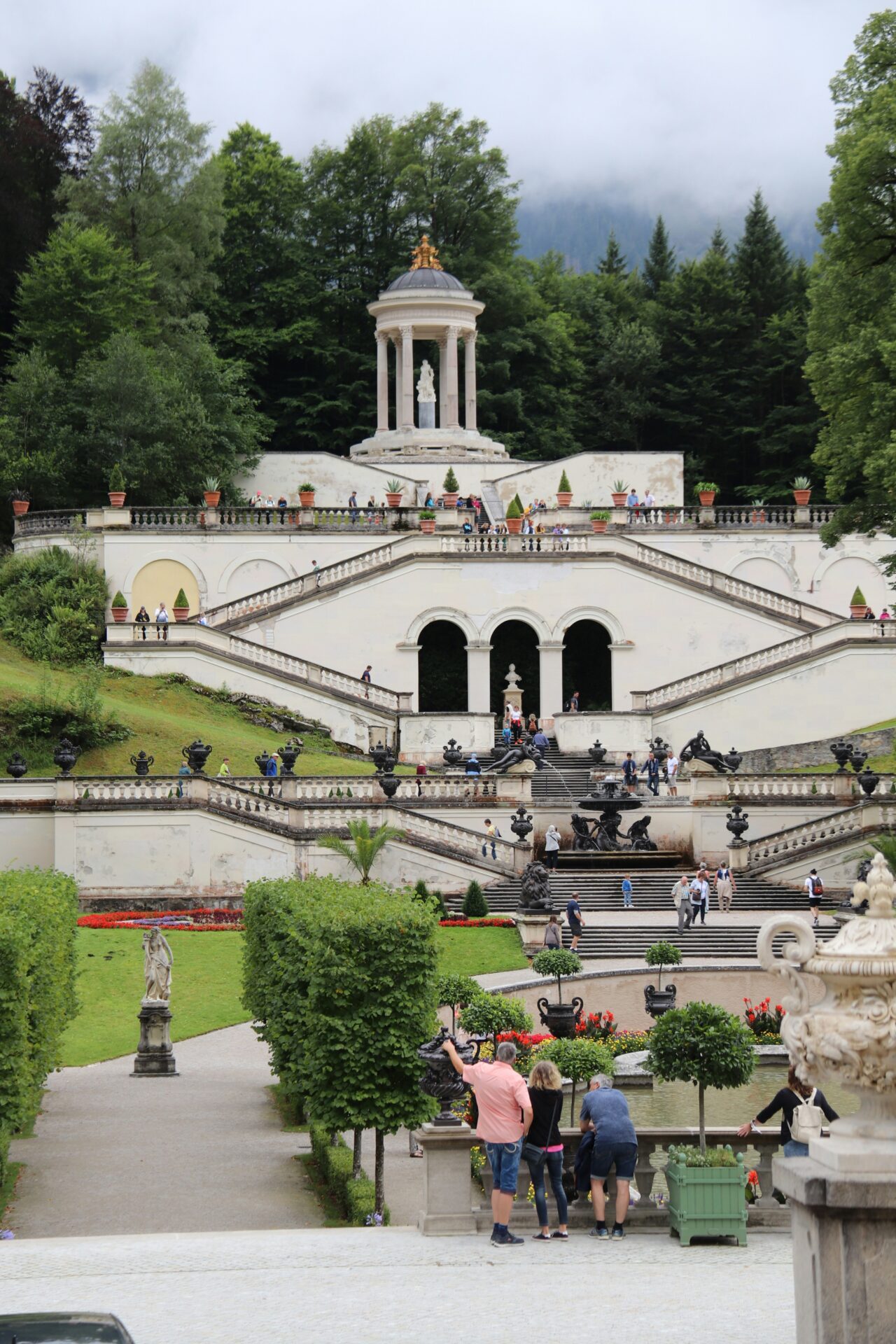
Japan, Russia, and the Wider Sphere of Influence
Linderhof’s fame eventually reached eastward. Russian dignitaries admired Ludwig’s taste and often sent gifts.
The palace’s artistic style matched Russian aristocratic trends that were catching on in Moscow and St. Petersburg.
By the 20th century, more Japanese tourists started visiting. I met travelers who wanted to compare Linderhof’s gardens to their own palatial spaces back home.
Chinese visitors also showed interest, especially in the way tradition and innovation blended here. Somehow, Linderhof’s unique mix gave it a reputation that stretched well beyond Germany.
Notable Connections:
- Russians sent elaborate presents
- Japanese travelers inspired by gardens and art
- Chinese visitors interested in design fusion
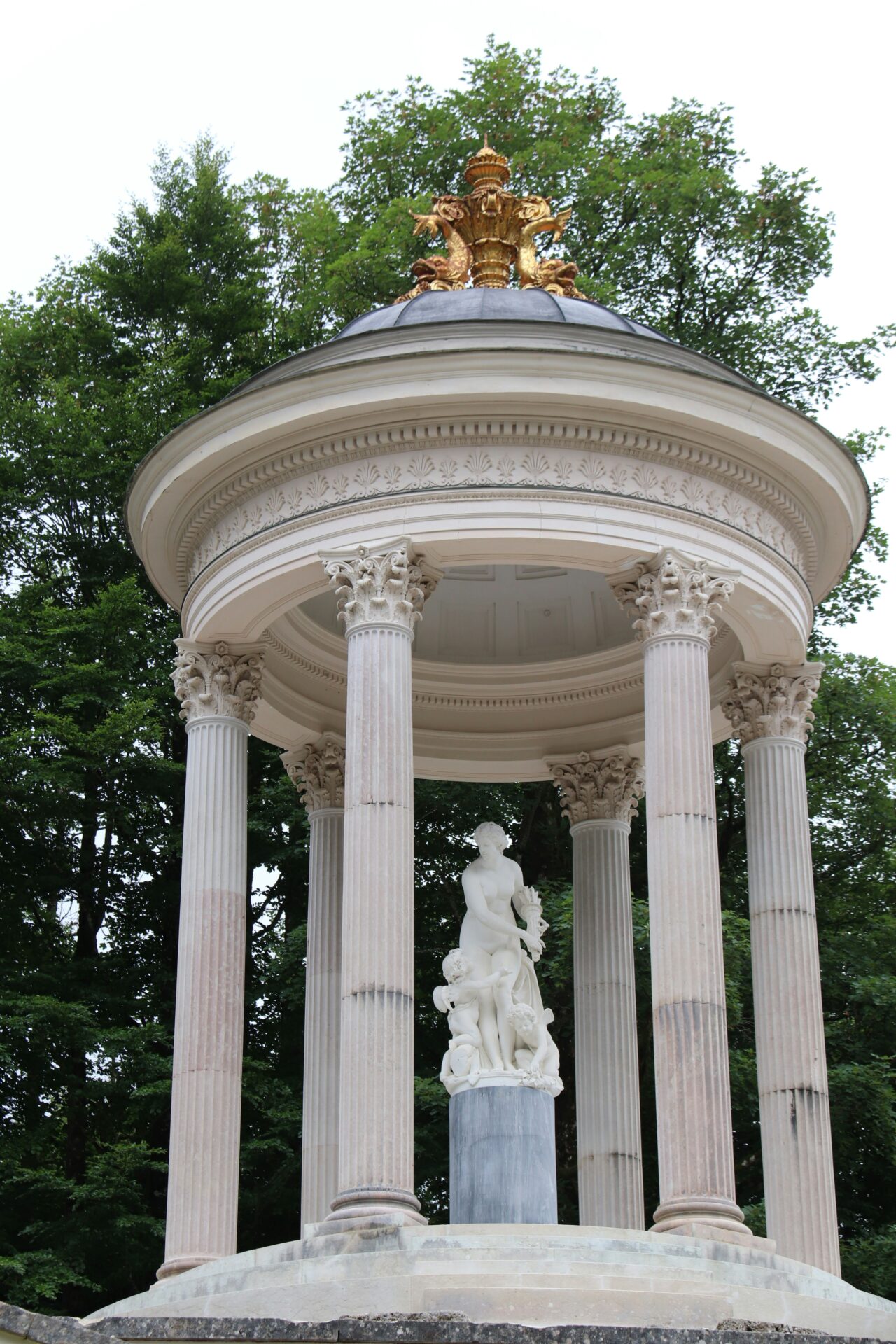
Reflections in Cinema and the Anti-Semitic Era
Movie directors have always found Linderhof’s elaborate rooms and enchanting gardens irresistible. I’ve watched film crews set up scenes for historical dramas and period pieces.
Its opulence feels like pure cinematic gold—no wonder it pops up in so many European films.
During the Nazi period, the palace’s history took a much darker turn. The regime tried to use Linderhof’s royal image for propaganda, even though it wasn’t really a major site of anti-Semitic acts.
Now, signs and tours don’t shy away from this era. They remind visitors how history can twist beautiful places into something harmful.
As a traveler, I find this context essential—not just for what’s on display, but for the reality behind all that gold.

